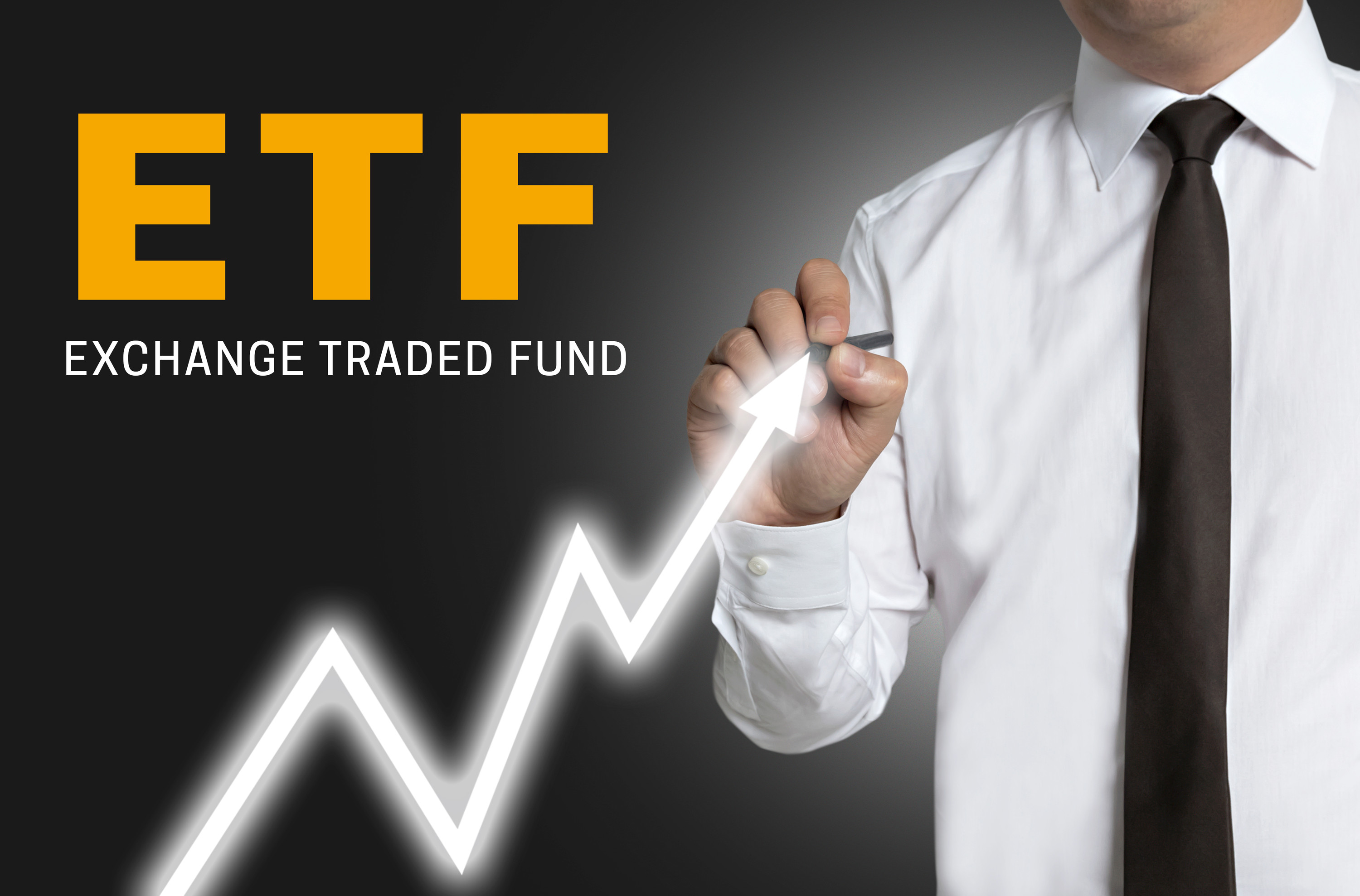 |
||
 |
||
|
How Wealthy People Use Professional Money Management
|
||
 |
||
 |
||
|
How Wealthy People Use
Professional Money Management1

Written by Financial Educators
Provided to you by
John C. Gilbert
MBA
1195381
Introduction
Just as surgeons don't operate on themselves, wealthy people usually do not invest their own money. They have investment professionals manage their money for them.
In this booklet, we will discuss three types of professional money management and the differences between each. We will look at mutual funds, exchange traded funds and separately managed accounts, and the pros and cons of each.
Mutual Funds
There are many reasons why people select Mutual Funds in their own portfolios. Here are some of the most common reasons:
Advantages

 Mutual funds are suitable for the small investor because most accept
small investment amounts, typically $2500 or less. Secondly, mutual funds
offer liquidity with the ability to add or withdraw from your account
at the end of any day. Additionally, the money is invested by an individual
or team of individuals who are typically experienced investors, have a tested
investing methodology, and have typically earned the Chartered Financial
Analyst credential. This is a rigorous program of study, far more comprehensive
than the exams a financial advisor or investment advisor must pass. So far,
mutual funds appear to be an easy investment for any type of investor.
Mutual funds are suitable for the small investor because most accept
small investment amounts, typically $2500 or less. Secondly, mutual funds
offer liquidity with the ability to add or withdraw from your account
at the end of any day. Additionally, the money is invested by an individual
or team of individuals who are typically experienced investors, have a tested
investing methodology, and have typically earned the Chartered Financial
Analyst credential. This is a rigorous program of study, far more comprehensive
than the exams a financial advisor or investment advisor must pass. So far,
mutual funds appear to be an easy investment for any type of investor.
Maybe most important is diversification. Mutual funds may have from 30 to 500 different stocks in the fund thereby diversifying your money and potentially reducing risk to your principal. Should a couple of companies in the mutual fund do exceptionally poorly; the poor performers will not have a large impact on a big portfolio (note that diversification does not ensure a profit or guarantee against loss.) However, there are investors who would prefer not to use mutual funds as explained under the disadvantages section.
Disadvantages
Fees: One of the often cited complaints about mutual funds is that of heavy fees. A summary of costs from various research studies calculated the average cost of owning a domestic equity fund at 3.52% annually in a non-taxable account. This does not include the cost of any front end or back end cost, redemption fees or 12b-1 fees2. A similar study by the SEC concluded that average fees were lower.3
Turnover and Taxes: Closely related to the issue of high fees is the issue of portfolio turnover and income taxes. (Please consult with a tax advisor as the information below is a general discussion). The turnover rate (frequency of purchases and sales) in a fund is not necessarily a bad thing but it does increase your tax bill if the fund is selling stocks with lots of short-term gains. Additionally, turnovers cost you money. If turnover does hurt a fund’s return, wouldn’t there be a correlation between a fund’s turnover rate and its after-tax return? Indeed there is!4
To optimize your mutual fund returns, or any investment returns, know the effect that taxes can have on what actually ends up in your pocket. Mutual funds that trade quickly in and out of stocks can have
what is known as “high turnover.” While selling a stock that has moved up in price does lock in a profit for the fund, this is a profit for which taxes have to be paid. Turnover in a fund creates taxable capital gains, which are paid by the mutual fund shareholders.
The SEC requires all mutual funds to show both their before- and after-tax returns. The differences between what a fund is reportedly earning, and what a fund is earning after the investor pays taxes on the dividends and capital gains, can be tangible. If you plan to hold mutual funds in a taxable account, please check out these historical returns in the mutual fund prospectus to see what kind of taxes you might be likely to incur.
If you would like to know if your funds have high turnover and resulting high tax impact, please call for a free analysis on the funds you own. Next we have the issue of style drift.
Style Drift: Included in this topic of the fund-holding securities, what you may not want to own is the issue of style drift. For example, one might invest in a value fund which focuses on large “blue chip” companies selling at modest price-earnings ratios. But the fund manager may get tempted by the fast increase in Internet stocks and start allocating the fund’s money into these investments. You can avoid this problem of style drift by using funds that can never vary from their stated style in the prospectus.
Derivatives: Did you know some funds might borrow money to buy securities? Are you comfortable knowing that these funds may borrow money (in an effort to buy more stocks and enjoy gains), which could magnify losses if the market falls? Do you know if your fund uses volatile derivatives in order to boost returns? Derivatives are financial instruments, whose up and down price movements are based on the movements of an underlying security, such as a stock or bond. However, the derivative’s volatility is usually greater. If the stock moves 10% in value, the derivative could move even more. These issues are mentioned in your fund’s prospectus, but you may not know that your fund can be volatile until your fund’s semi-annual report. The use of leverage by mutual funds can significantly increase a fund’s volatility, so low-risk investors may want to avoid funds that trade derivatives.
Trading Limitations: Note that unlike a stock, you cannot buy or sell open-end fund shares in the middle of the trading day. While the once-per-day trading limitation may seem fine to you, more active traders desire to trade in the middle of the day and also to sell short to capitalize on market movements. While we will not discuss short-selling in this pamphlet, mutual funds cannot be sold short and there are no puts or calls on mutual fund shares.
Commingling: Last, is the potentially negative issue that your money is commingled with the money of other investors. When the market declines, if other investors in the mutual fund get nervous and take their money out of the fund, this forces the fund manager to sell securities in the fund. The sale is necessary to get the cash to send to the fund investors. So while you may view a decline as an opportunity to buy, your fund manager cannot do so as he is forced to sell to meet redemptions of the nervous investors.
Exchange Traded Funds (ETFs)

 ETFs were
developed to mitigate the disadvantages of open-end mutual funds, covered previously.
ETFs were
developed to mitigate the disadvantages of open-end mutual funds, covered previously.
First, the shares provide diversification just
as do open-end mutual funds in that they often track an entire index, such
as the S&P 500 index. Therefore,
one could argue that this is similar to owning the 500 shares in the S&P
index.
Secondly, ETFs’ shares are traded on the stock exchange. This means that the shares can be bought or sold at any time during the day like any share of stock. A more active trader finds this flexibility appealing as open-end mutual funds shares can only be bought or sold at the end of the day. Moreover, ETFs’ shares can be sold short and many have puts and calls traded on them, thereby enhancing their appeal for an active investor.
Next, more sophisticated investors are typically sensitive about fees. Because many ETFs track an index, the holdings within the ETF rarely change. Because there are few changes, there is no need for an active manager, and as a result, the cost to manage the fund and the fees to the investor are much smaller. As Wikipedia summarizes, "Mutual funds can charge 1% to 3%, or more; index fund expense ratios are generally lower, while ETFs are almost always in the 0.1% to 1% range. Over the long term, these cost differences can compound into a noticeable difference."5 Do note that to trade ETFs, the investor pays a commission for the transaction.
Closely related to the previous paragraph is the mentioned low turnover. Because there is very little buying or selling of shares, there is a very small tax impact to the investor. In the illustration of an ETF which tracks the S&P 500 index, all holdings in the ETF are typically held for more than a year, so when a sale does occur, it is a long-term sale resulting in a long-term capital gain or loss. Long-term capital gains are taxed at preferential rates as are qualifying dividends from the shares in the fund.
An ETF, like an open-end mutual fund, has many investors money commingled. Some investors would like to have their portfolio managed separately and thereby gain ultimate tax control from the timing of purchases and sales. That opportunity is provided by separately managed accounts.
Separately Managed Accounts

 Separately managed
accounts go by several names in the securities industry such as wrap accounts,
individually managed accounts, fee-based accounts, managed accounts – and
they were originally an offering available to the wealthiest of investors – typically
having $1 million or more in a portfolio.
Separately managed
accounts go by several names in the securities industry such as wrap accounts,
individually managed accounts, fee-based accounts, managed accounts – and
they were originally an offering available to the wealthiest of investors – typically
having $1 million or more in a portfolio.
However, investment managers and brokerage
firms, using technology, have been able to offer separately managed accounts
to investors of more modest means. Let's take a look at the advantages.
Individual cost basis
Because each security in the account is your own security and belongs only to you, you know how much it was purchased for, and prior to sale, you know how much the taxable gain will be. This permits you to instruct the manager to avoid taking profits at times when it may be bad for you from an income tax standpoint. If you own shares in a mutual fund, you simply get a 1099 form at the end of the year outlining how much you have to report to the IRS. Surprise!
Because you have an individual cost basis in each security, not only can you manage the gains and losses within that portfolio, you can manage your overall tax situation. Let's assume you sold a piece of real estate and have a profit. You may ask your separate account manager to sell some stocks with losses before the end of the year; thereby recognizing those paper losses to save you tax dollars.
To take the tax issue a step further, you may not have realized that when you buy a mutual fund, there may be embedded capital gains. This means that the fund has already made sales, captured profits, and at the end of the year – even though you are a new shareholder – you will be forced to pay your share of the tax on the gains that occurred prior to you becoming a shareholder. With a separately managed account, you never have this embedded capital gains issue.
Personalization
If you have specific social convictions, such as the avoidance of tobacco stocks, you can provide that instruction to your separate account manager. Unlike a commingled account, your wishes within reason can be reflected in your investment account.
Because separately managed accounts can be offered for as little as $100,000, for your $300,000, you could have three different professional managers. Each manager could focus on a separate financial goal you have, a goal that matches the selected manager's expertise.
Transparency
Separate accounts provide you with comprehensive performance reporting and full disclosure of all costs. Unlike a mutual fund that does not tell you how much you profited or lost for the year or what the fund holds at any time, you will receive a quarterly report that shows your gain or loss clearly with all costs clearly indicated. Because most separately managed accounts are available to view on-line, you can check on your holdings 24 hours a day.
Fees
Mutual funds often charge sales loads, management fees and service fees while separately managed accounts typically charge an all-inclusive "wrap" fee.6
Discipline
Possibly the most valuable feature of a separate account manager is their investment discipline. These managers typically have an investment model that tells them what to buy and sell and when to buy and sell it. They do not react to every news story as some individual investors do. It's this discipline that many wealthy investors feel separate them from those who have not been as financially successful.
Caution
Some separately managed accounts invest in mutual funds or other registered investment companies and may thereby subject the investor to 2 sets of fees � the advisory fee for the separately managed account itself plus the management fees and expenses of the underlying registered investment companies.
| Comparing the Features | ||||||||||||
|
| Comparing the Features (cont.) | ||||||||||||||||||||
|
| Comparing the Features (cont.) | ||||||||||||||||||||||||||||
|
| Comparing the Features (cont.) | ||||||||||||
|
||||||||||||
Data in above table from MFS Investment Management, "Is a Separately Managed Account for You?" December 2013 http://kovackadvisors.com/ka/Presentations/MFS%20Whitepaper%20-%20 Is%20a%20SMA%20for%20you.pdf |
Fund Type |
Average Total Operating Expenses |
|
Mutual Funds |
ETFs |
|
US Large-Cap Stock |
1.31% |
0.47% |
US Mid-Cap Stock |
1.45% |
0.56% |
US Small-Cap Stock |
1.53% |
0.52% |
International Stock |
1.57% |
0.56% |
Taxable Bond |
1.07% |
0.30% |
Municipal Bond |
1.06% |
0.23% |
About
John C. Gilbert
 John Gilbert has been assisting seniors and helping educators save money for retirement for 20 years. He protects their assets. He has advised retirees of many school districts like HISD, Aldine, and Spring ISD just to name a few with how to create an income stream they cannot outlive and save money for retirement. John is a licensed agent in the state of Texas and an expert in helping retirees preserve their assets and increase their income.
Mr. Gilbert graduated from University of St. Thomas in December 1995, with an MBA in Business after some undergraduate work at Prairie View A&M University. To avoid the most frequent ways that many retirees ruin their finances, do not miss the opportunity to schedule an appointment with him.
John Gilbert has been assisting seniors and helping educators save money for retirement for 20 years. He protects their assets. He has advised retirees of many school districts like HISD, Aldine, and Spring ISD just to name a few with how to create an income stream they cannot outlive and save money for retirement. John is a licensed agent in the state of Texas and an expert in helping retirees preserve their assets and increase their income.
Mr. Gilbert graduated from University of St. Thomas in December 1995, with an MBA in Business after some undergraduate work at Prairie View A&M University. To avoid the most frequent ways that many retirees ruin their finances, do not miss the opportunity to schedule an appointment with him.
About
John Gilbert
John Gilbert, an independent agent with In-Line Insurance and Annuities seeks to preserve clients assets and our style would be properly considered to be "conservative." Most of our clients are looking for strategies to help them plan to save for retirement or age 60+ and retired but looking for a place to park some money that will give them upside potential and downside protection. Our approach have been successful in preserving client account values even during volatile times.
| · | Wealth Management – preserve your capital - |
| · | Insurance Services – assure that your risks in life are insured for so that an unforeseen event does not destroy your savings and financial plan. - |
| · | Insurance Plans – Whole Life Insurance, Index Universal Life, and Term Insurance - |
Phone today with questions or to see if we can help you.
There is no charge for an initial meeting.
John C. Gilbert
MBA
(832) 722-4749
John Gilbert
[email protected]
413 West Parker Road Suite A
Houston, TX 77091
©2015 Financial Educators
First Published 11/11/11
This booklet is protected by copyright laws. It may not be reproduced or distributed without express written permission of the author by
anyone other than those with an active subscription to SeniorLeads™ or advisorbooklets.com.
Published by Financial Educators
1 ↑ Many Households That Own Mutual Funds Have Moderate Incomes, Investment Company Characteristics of Mutual Fund Investors 2020 https://www.ici.org/pdf/per26-09.pdf. Alternatively, only 1% of respondents worth $5 million to $10 million invest in mutual funds...among those worth $20 million or more, NONE invest in mutual funds...Study by Prince and Associates, http://blogs.wsj.com/wealth/2007/06/12/how-the-rich-invest. Sites visited 12/16/21.
2 ↑ US News 3/4/15 "The Mutual Fund Fees We Don't Talk About," https://bit.ly/3Hur57BSite visited 1216/21
3 ↑ http://www.sec.gov/news/studies/feestudy.htm. Site visited 12/16/21
4 ↑ "Taxes are one of the most significant costs of investing in mutual funds through taxable accounts� Recent estimates suggest that more than two and one-half percentage points of the average stock fund's total return is lost each year to taxes." SEC website http://www.sec.gov/rules/final/33-7941.htm. Visited 12/16/21.
5 ↑ Wikipedia "Exchange-traded fund" https://en.wikipedia.org/wiki/Exchange-traded_fund#CostsVisited 12/16/21.
6 ↑ MFS Investment Management, "Is a Separately Managed Account for You?" https://bit.ly/3mQN296, December 2013, visited 12/16/21
7 ↑ Wealthfront https://www.wealthfront.com/research/mutual-fund-fees, visited 12/16/21
8 ↑ Forbes "What's The Difference? Mutual Funds And Exchange Traded Funds Explained" https://www.forbes.com/sites/feeonlyplanner/2013/07/18/whats-the-difference-mutual-funds-and-exchange-traded-funds-explained, visited 12/16/21